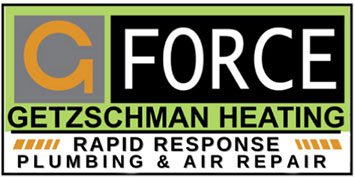5 Common Winter Heating Problems
Now that the temperatures are dropping, it’s time to turn off the air conditioner and prepare for the chilly winter. As you pile up the blankets and dust off your winter coats, you may fire up the heater and settle in for a cozy winter inside.
But even if your heater worked perfectly last year, it may have a few hiccups this year. To learn more about common problems heaters have during the winter, take a look at the information below. We’ll discuss a number of different issues and what might be the cause.
1. Heat Cycling
If you notice your heater is turning on and off far more often than usual, this is called heat cycling. Heat cycling lowers system efficiency and raises your utility bills, so even if you think you’re getting enough heat, you’ll want to get your heater fixed as soon as you can.
Heat cycling can indicate an excessively dirty blower or filter, or it could be the result of a
malfunctioning thermostat. Change your filter or take a look at your thermostat. If you notice your thermostat is broken or a fresh filter doesn’t solve the problem, call a professional to take a look. They can easily pinpoint the problem and clean various areas of the heater.
2. Carbon Monoxide Leaks
Whether your heater is brand new or a decade old, install a carbon monoxide detector in your home. Carbon monoxide can easily go undetected if you solely rely on human senses. It’s tasteless, colorless, and odorless, and it can be deadly in the right amounts.
Carbon monoxide leaks are most common in furnaces that are 10 to 15 years old, so if your furnace is at least a decade old, have it inspected just in case. Or, if your carbon monoxide detector catches a whiff of carbon monoxide, call a professional immediately. They’ll know how to effectively find leaks and provide proper repairs.
3. Dry Air
Dry air can be troublesome and uncomfortable, especially if your skin is sensitive or already unusually dry. When your home has an unusually low humidity, your skin might feel dry and itchy. The lower humidity levels can also dry out and crack woodwork and wood furniture. But dry air can affect the efficiency of your heating system too.
Dry air holds less heat, so it may take more for your home to be comfortable and cozy. To remedy this issue, use a humidifier. You can use an individual humidifier in a main room, or you can install a humidifier in your HVAC system for more even moisture levels throughout the home. Not only will this protect your wood furniture and features, but it will also make your home warmer and cozier through the winter.
4. Inconsistent Heating
Most likely, you want your whole house to be properly heated, so walking from a warm room to a chilly one can be irritating. While this could certainly be a result of a malfunctioning part or heating system, it could also be a problem with your home.
Look around doors and windows for holes or cracks, and ensure your weather stripping is intact. You could have a problem with your insulation.
If everything looks properly sealed and insulated, the system’s coils or filter might be overly dirty. The uneven heating can also be a result of grimy air ducts or clogged vents. Check the filter and get your system cleaned to see if that solves the problem.
Should you still experience problems with inconsistent heating, your air handler may have some issues. Air handlers help circulate air throughout the house, and when your air handler needs repairs, you might hear a grinding sound while the heat is on.
Sometimes, whole floors can be warmer than others. When your upper stories are warm while the lower floors are cold, consider closing the upstairs vents to direct warm air to the bottom levels. Because heat rises, the cozy heat downstairs will eventually drift upwards.
5. Lack of Heat
Inefficient heating can be troublesome, but at least it still keeps your home warm. When your heating system isn’t warming your home at all, it could be due to a number or problems. Before you check anything else, look at your thermostat to make sure it’s working and has fresh batteries. A lack of heat could easily be caused by a faulty thermostat.
If you have a heat pump, it could be struggling with the winter weather. Icy wind and snow can put heavy frost on your heat pump, which can prevent the heat pump from functioning properly. Be sure your heat pump has defrost settings to keep the ice and frost at bay. If it doesn’t have the right settings, you’ll have to clear the ice and frost yourself.
For a furnace, you may have a problem with your pilot light. If your pilot light isn’t on, check to see if it has a steady power source. If not, there may be a bit of gunk and grime in the assembly, and you should call a professional to carefully clean it out for you.
When your pilot light is on but you’re still experiencing a loss of heat, you may have problems with the main burners, gas valves, control board, or flame sensor. An HVAC specialist, such as Getzschman Heating, can detect the problem and offer the best solution. We may suggest you replace your furnace, or we may recommend a few simple repairs.
